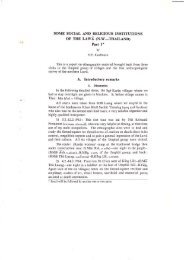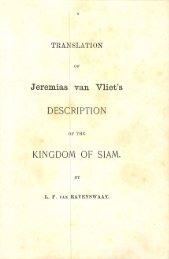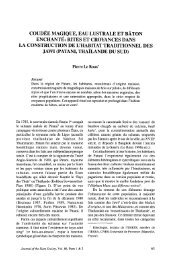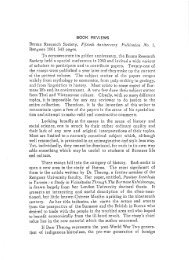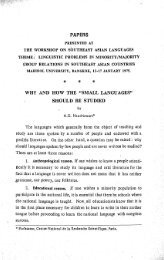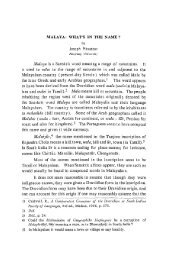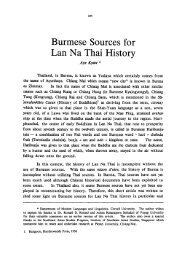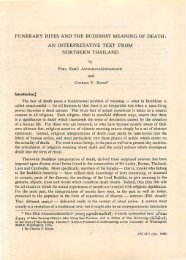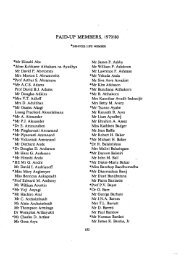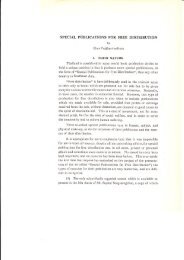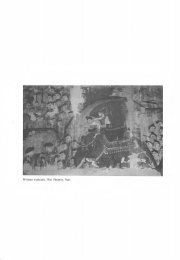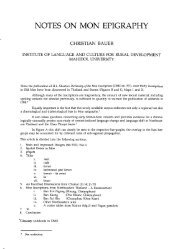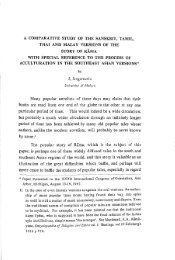REVKJEWS - Siamese Heritage Protection Program
REVKJEWS - Siamese Heritage Protection Program
REVKJEWS - Siamese Heritage Protection Program
You also want an ePaper? Increase the reach of your titles
YUMPU automatically turns print PDFs into web optimized ePapers that Google loves.
182 Nicholas Tapp<br />
Vietnam were handed versions of this document by the Yao, and the story it enshrines<br />
is the reason why the eating of dog is today taboo for the Yao, and why the traditional<br />
wedding veil should cover the bride's head 'as a device to hide from her the bestiality<br />
of the groom'.<br />
Their voyage across the sea from China after a great drought has become a<br />
second origin myth for the Yao, and this too is illustrated in the paintings. Thus the<br />
paintings provide a full graphic model of the Yao cosmology, seen in Taoist terms to<br />
begin with the origins of creation from the expansion of the body of the cosmic man<br />
after death. The text examines and explores this cosmology. Also illustrated are<br />
many culture heroes and Chinese deities, besides the father of historical Taoism, the<br />
Celestial Master Chang, who (p. 75) founded a theocratic state in the Western Marches<br />
of the decaying Han Empire after his researches into alchemy had resulted in the<br />
discovery of the Pill of Immortality, where among Han and tribal people a doctrine<br />
was taught which attributed illness and suffering to immoral behaviour, expiable<br />
through priestly confession. Today similar sets of paintings are in use among Chinese<br />
Taoist priests of the Taiwan area, and the book also illustrates various aspects of Yao<br />
religious and ceremonial life, as well as providing information on the life circumstances<br />
and village situations of the Yao today, showing why, how and where the paintings are<br />
exhibited and what part they play in the spiritual comrpunity of the Yao. Thus there<br />
is also material on the masks and wreaths depicting the gods which are worn by priests<br />
at rituals. Altogether an absorbing work, and one which throws much ethnographic<br />
light on an insufficiently known and currently fragmented culture.<br />
School of Oriental & African Studies,<br />
London University<br />
Niclto/as Tapp



